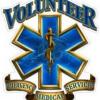Hoping this forum can settle a pretty "heated" debate (pun intended!).
In our discussion about Cleaning/Sanitizing as we pursue SQF Level 2 Certification, someone mentioned that they thought that the use of just Hot Water -- as long as it's hot enough and it reaches a certain temperature first -- was more than sufficient to use in the place of a standard Sanitizer solution instead.
Is this true? And, if so, what is the temperature that the Hot Water would need to be at in order to qualify and in order to fulfill the role of a "Sanitizer" in our process?
As always, thanks in advance for your time and help!
All The Best,
JKRed


















